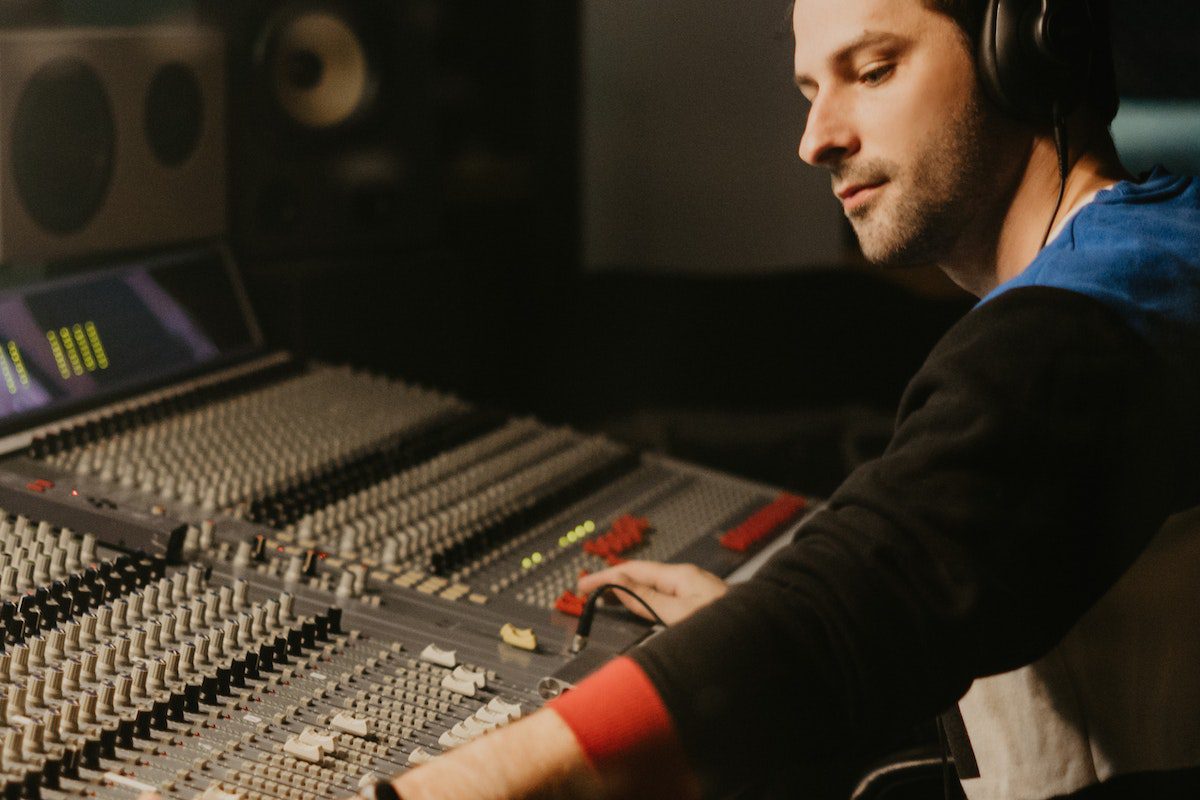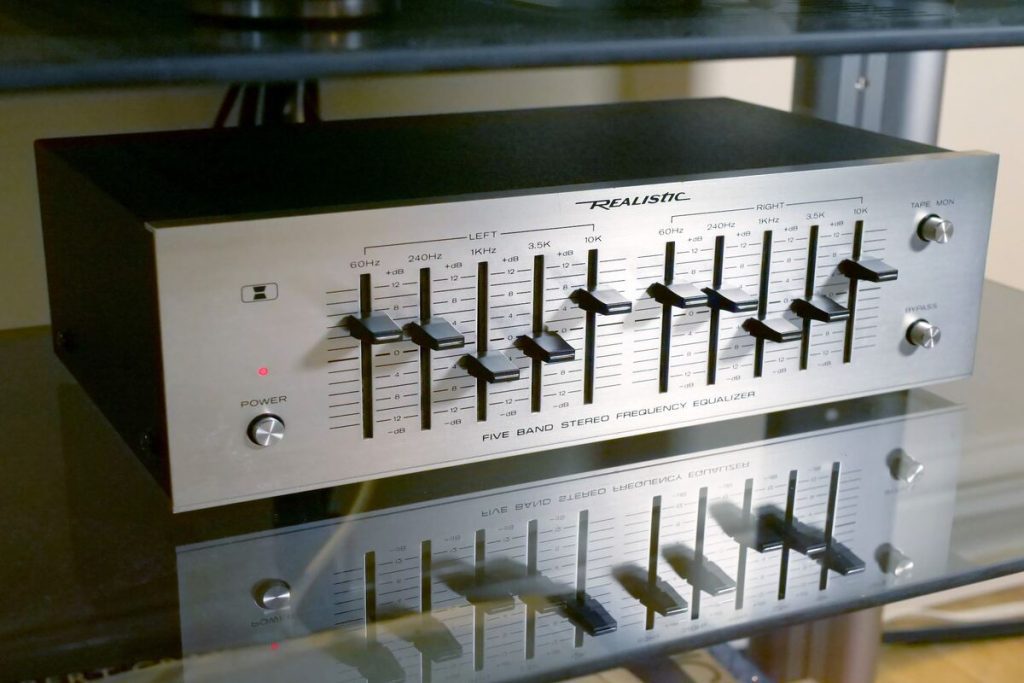Ever found yourself getting drawn into a track, feeling the vibe, and thinking, “Man, this sound is just so warm?” That “warmth” we talk about in the audio world isn’t just some random jargon thrown around by producers and sound engineers. It’s often dismissed as an overhyped buzzword, but ask anyone in the game, and they’ll tell you that “warmth” holds a pretty special spot in their beat-pounding hearts. So what exactly is warmth in audio?
What is warmth in audio? Warmth in audio is the desirable quality that makes a song sound inviting and pleasing to the ear, characterized by a balanced emphasis on lower frequencies, controlled treble, and the subtle introduction of harmonic distortion and imperfections that add color and depth to the sound.
How does vintage gear contribute to warmth?
When it comes to creating that warm and inviting sound, vintage gear holds a special place in the hearts of audio enthusiasts. The slew rate and vintage transformers found in analog equipment play a significant role in introducing warmth into audio circuits. These components may operate a little slower than ideal, resulting in a unique sonic character that many perceive as warm.

Vintage gear, known for its nostalgic charm, owes much of its warmth to the input and output transformers it employs. The introduction of vintage transformers into the signal path can add a certain “gooey” distortion and a sense of “colored” sound that contribute to warmth. These transformers, combined with slow slew rates, result in a more rounded and harmonically rich audio quality. It’s the imperfections and non-linearities of these components that make the sound feel truly special.
AKAI Professional MPK Mini MK3

AKAI Professional MPK Mini MK3
How do Analog EQs add warmth?
Audio engineers often boost high frequencies despite the presence of “warm” preamps and microphones that emphasize lower frequencies and reduce treble. This may seem counterintuitive, but here’s where harmonic distortion comes into play.
Analog EQs, which engineers frequently employ, have the ability to introduce third-order or even second-order harmonics, as well as various non-linearities that interact with the input signal in a way that colors the sound and imparts a warm audio quality.
| Dos | Don’ts |
|---|---|
| Carefully enhance low-mid frequencies for a pleasing warmth | Overdo warmth and risk muddying the mix |
| Utilize tape saturation plugins for rounded, warm tones | Apply excessive saturation or distortion, resulting in distortion |
| Use EQ plugins that emulate analog gear’s harmonic distortion | Neglect the overall balance and clarity of the audio |
| Replicate warmth from classic analog recordings | Ignore the knowledge and techniques used by old-guard engineers |
How do audio imperfections and vibe add warmth?
While some may associate warmth with imperfections, most engineers don’t mean warmth in that sense. Imperfections are more commonly associated with tape recordings, where warmth can often be equated with a loud hiss, reduced bit depth, and compressed treble frequencies. However, when it comes to the general notion of warmth, vibe enters the conversation.
To achieve warmth in the analog recording world, it’s crucial to have quality sources, excellent microphones, preamps, and EQs…
Vibe describes sounds with imperfections that possess a distinct character and lack the low-mid bump associated with warmth. It’s like that secret ingredient that gives a track its unique personality, making it stand out from the rest. Imagine comparing two synthesizers: the Moog Voyager and the vintage Moog Model D. While the Voyager may sound beefier in the bass. It’s the Model D that truly oozes vibe from every capacitor.
To achieve warmth in the analog recording world, it’s crucial to have quality sources, excellent microphones, preamps, and EQs loaded with transformers and tubes. All these elements, combined with the unique characteristics of vintage gear and the use of tape, contribute to the warmth that engineers seek. Imperfections, instabilities, and non-linearities are part of the equation that brings that gloriously juicy sound to life.
Why is digital often perceived as cold and sterile?
What makes digital come off as cold and sterile? The neutrality of digital recordings contributes to this. Unlike analog recordings, which come with slew-rate limiting, harmonic distortion, and tape saturation, digital tracks are stripped bare. Digital tools are designed to faithfully capture and reproduce audio without coloring the sound. Now, this neutrality can be both a blessing and a challenge.

How do you achieve warmth in digital recordings?
While analog recordings benefit from vintage gear, transformers, and tape, the digital world poses unique challenges. So, how can we achieve warmth in the digital domain where transformers are absent and EQs tend to be transparent?
- Enhancing the low-mid frequencies: In the absence of transformers and warm analog gear, digital producers use alternative techniques to add warmth to their recordings. One effective way is to carefully enhance the low-mid frequencies without going too far to avoid muddiness. It’s all about highlighting warmth while keeping your mix crystal clear and defined.
- Tape saturation and harmonic distortion: While digital recording lacks the natural warmth of analog, it does offer the flexibility to incorporate tape saturation plugins. Got Logic’s tape delay with distortion options? Or some other tape saturation plugin? These bad boys can work magic. By compressing the high-end frequencies and rounding off treble transients, tape saturation can infuse the desired warmth into digital recordings.
- Taste and Restraint: It’s all about balance when you’re crafting warmth in the digital world. Too much saturation or distortion, and you’re heading for a total meltdown, not a simmering mix. The trick is to know your tools, to know how much warmth to dial in without messing with your mix’s clarity and balance. Digital provides flexibility, but it requires a keen understanding of the warmth present in classic recordings and the ability to replicate it with available tools.
If you want even more great tips and information, check out the video below.
Advantages and disadvantages of analog and digital warmth
When it comes to warmth in audio, both analog and digital approaches have their own advantages and disadvantages. Let’s explore them further:
Advantages of analog warmth
- Embraces imperfections and instabilities for a unique warm character.
- Vintage gear and transformers provide organic sound coloring.
- Tape introduces pleasing saturation and harmonic richness.
Disadvantages of analog warmth
- Limited flexibility in editing and manipulation compared to digital.
- Maintenance and cost associated with vintage gear.
- Potential degradation of sound quality over time with tape.
Advantages of digital warmth
- Offers flexibility and a wide range of tools and techniques.
- Precise control over sound characteristics for a balanced mix.
- Replicates warmth through emulation and saturation plugins.
Disadvantages of digital warmth
- Inherent neutrality may require deliberate warmth-adding techniques.
- Risk of overdoing warmth and compromising the clarity of the mix.
- Some digital emulations may not fully capture the character of analog warmth.
Frequently Asked Questions (FAQ)
Do you still have questions about warmth in audio? Below are some of the most commonly asked questions.
How can I add warmth to my digital recordings without analog gear?
While digital recordings may lack the inherent warmth of analog gear, there are several techniques you can employ to add warmth. Some options include enhancing the low-mid frequencies, using tape saturation plugins or plugins that emulate harmonic distortion, and understanding the characteristics of warmth in classic analog recordings. Experiment with these techniques to find the right balance and achieve warmth in your digital mixes.
Can warmth be replicated in digital recordings?
Absolutely! While digital recordings may be perceived as cold and sterile, they provide the flexibility to replicate warmth through the careful application of tools and techniques. By understanding the elements that contribute to warmth, such as quality sources, microphones, preamps, and EQs, you can use digital tools to add harmonic richness and tasteful saturation. Embrace the digital advantage, experiment with different plugins, and strive to replicate the warmth found in classic analog recordings.
Is warmth a matter of personal preference or a technical requirement?
Warmth in audio is subjective to a certain extent. While some listeners may prefer a warmer sound, warmth is also associated with certain technical characteristics, such as balanced low-mid frequencies, controlled treble, and the introduction of harmonic distortion and imperfections. Achieving warmth requires both technical understanding and a discerning ear to strike the right balance that suits the desired artistic intent.
Conclusion
Whether we’re working in the analog or digital realm, the pursuit of warmth requires a combination of knowledge, creativity, and the right tools. Did I cover everything you wanted to know? Let me know in the comments section below. I read and reply to every comment. If you found this article helpful, share it with a friend, and check out my full blog for more tips and tricks on audio production. Thanks for reading, and may your sounds always be warm and inviting!
Key Takeaways
This article covered the topic of warmth in audio, exploring its significance and techniques for achieving it. Here are some key takeaways:
- Vintage gear with slower slew rates and transformers contribute to warmth in analog recordings.
- Analog EQs and harmonic distortion play a role in adding warmth and color to the sound.
- Imperfections and “vibe” can be associated with warmth, depending on the context.
- Digital recordings can replicate warmth through techniques like enhancing low-mids and using saturation plugins.
- Understanding the elements of warmth and applying the right tools and techniques are crucial for achieving warmth in both analog and digital recordings.















